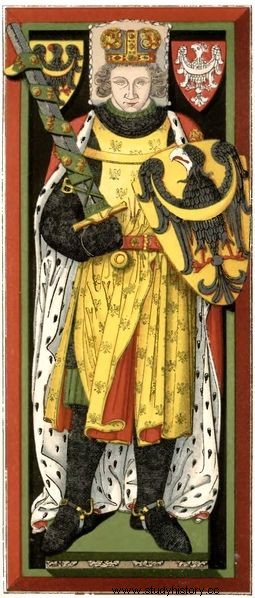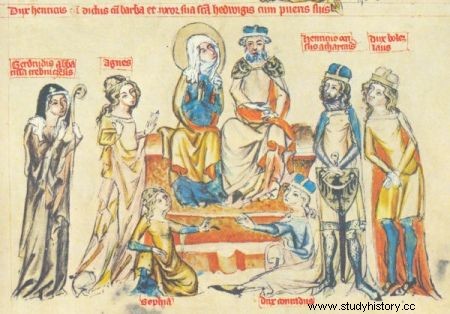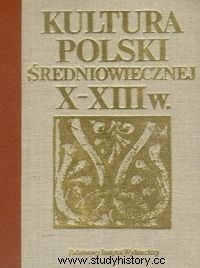What did the medieval people we know from novels and history books look like? What did they wear, what hairstyles did they wear and how did they care for hygiene? Below we answer these questions and many others, using the example of Poland in the 12th-13th centuries. By the way, we also explain what underwear was in the Middle Ages. Because definitely not underwear.
The basis of the right appearance was hygiene and cleanliness. Nobody wanted a dirty prince. Contrary to the ancient patterns - which reached Poland from Western Europe - our medieval ancestors liked to take a bath and did it extremely often . Baths were located in all large settlements, in suburbs and, of course, at the rulers' residences. Washing was done with lye (called zoła in Polish), and large tubs were bathed in.
Much attention was paid to the hairstyle. As Stanisław Trawkowski emphasizes in the "Culture of medieval Poland of the 10th-13th centuries":(p. 64).
In the 13th century, there was fashion to wear very short hair in Poland . On its basis, a legend has been coined that such a custom was initiated by prince Kazimierz the Restorer, who in his youth was allegedly a monk in the monastery in Cluny. In fact, he was not a monk, and the fashion was probably… simple convenience. Because in times of ubiquitous fleas, lice and no shampoos, a short haircut is the best haircut.

Henry IV the Right as a model of medieval men's fashion?
Beards, which were completely out of fashion in the full Middle Ages, were similarly thought. As a rule, knights, lords and clergymen completely shaved their stubble, and if it was worn, it was only as a sign of humility. At that time it was also a beard not at all long, but well arranged with moderate trimming hair (p. 65) .
Shoes, and above all, the very fact of having them played a big role. It was the footwear that distinguished, from the Middle Ages, gentlemen from peasants. It even happened that in Rus, princes attacked communities known for wearing good shoes (i.e. richer!), and one of the missionaries trying to convert Pomeranians failed because no one took seriously an ascetic who could not afford footwear.
Apart from the shoes , the position was best demonstrated by the chain mail . Only the wealthiest could afford such armor, and even in the 12th-13th centuries it was still a rarity in Poland. Not surprisingly, counting that making one chain mail required tens of hours of truly Benedictine work, consisting of joining thousands of small metal rings. Dukes and the highest dignitaries had chain mail - others had to be content with properly ornate leather caftans.
In the cold Polish climate, furs and sheepskin coats were commonly worn in winter. It was, however, an outfit that in itself said nothing about the status of its bearer. Therefore, the aristocrat took care not only to have a perfect quality fur, but also that it was covered with silk and decorated with golden fringes . Such accessories were characteristic for the court attire.
Knights, even the richer ones, could not afford silk, so they covered their furs with woolen fabrics. From the 12th-13th centuries they also took care to build modern fireplaces in their residences, replacing open hearths, thanks to which their precious furs were no longer covered with soot and they did not constantly smell of meat and smoke.

Medieval court costumes in miniature depicting the family of Duchess Jadwiga Śląska. Men's beards "well-arranged"…
However, fur was not suitable for formal occasions. You had to look more festive on Christmas, Easter, on the day of trial or during princely audiences. Then, in accordance with the custom dating back to Roman antiquity, long, flowing robes were worn. So basically men's dresses . In Polish they were sometimes called… scarves.

The article is based on the chapter "Clothing and body care" by Stanisław Trawkowski in the collective work "Culture of medieval Poland X-XIII century" (State Publishing Institute, 1985)…
The clergy, like women, wore ankle-length robes, while the other representatives of the elite - magnates, wealthy townspeople, princes - only slightly shorter, because to the middle of the calf . Often these were garments cut from the bottom to the waist, which made horse riding easier.
The long robe was a symbol of high position, so it was for adults only. As Stanisław Trawkowski explained:
Young men from aristocratic backgrounds always wore short robes before reaching the working age, as if to show their dependence on their parents (p. 92).
Finally, it is worth remembering the underwear that was already worn then, but ... it meant something completely different than today. Medieval underwear takes its name from white squirrel bellies and meant the linings of the coats made with them. In turn, the entire squirrel belly coat was called a "underwear coat". Only a few hundred years later, underwear began to be referred to as panties and T-shirts ...

... but the inspiration for its writing was the novel by Elżbieta Cherezińska entitled "Crown of snow and blood" (Profit 2012).
Source:
Trivia is the essence of our website. Short materials devoted to interesting anecdotes, surprising details from the past, strange news from the old press. Reading that will take you no more than 3 minutes, based on single sources. This particular material is based on:
- Stanisław Trawkowski, Clothing and body care [in:] Culture of medieval Poland 10th-13th centuries , edited by Jerzy Dowiat, Warsaw, PIW 1985.
We recommend:
- Everyday and unusual life of medieval people was vividly portrayed by Elżbieta Cherezińska in her book "Crown of snow and blood" (Zysk 2012). You can read a review of this novel on "CiekawostkiHistorycznych.pl".
